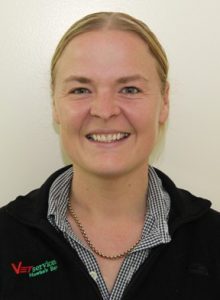In the second part of a series, Andrew Swallow investigates how a scientist, vets and sheep farmers are fighting back against drench resistance.
Worms resistant to one or more class of drench are probably present on most sheep farms and production losses will be eroding returns long before visible symptoms of excessive worm burdens are seen.
That warning comes from AgResearch’s Dave Leathwick who is helping farmers reverse drench resistance on their farms (see October 2018 Country-Wide Sheep issue).
“We’ve measured the impact of using a drench product on lambs that’s compromised by resistance and they returned $10 to $15 less per lamb… they take a growth check and so are smaller or take longer to get to drafting weight.”
‘It is best to perform a FECRT early in the season to ensure all the significant parasite species are present at the time of the test.’
Yet only about 10% of farms have ever done a faecal egg count reduction test (FECRT), so even if some of the remaining 90% are aware they might have a resistance problem, they won’t know how best to tackle it. Doing a FECRT typically costs $1000 to $1500 so doing one every third year on a farm finishing 5000 lambs works out at just 10c/lamb.
Given those numbers Leathwick is at a loss as to why more farmers haven’t checked the resistance status of the parasite population on the farm.
“Everybody accepts the need to vaccinate with a 5-in-1 pre-lamb but nobody accepts the need to drench test every three years.”

Veterinary Services Hawkes Bay’s Camille Flack has a similar analogy, asking why it’s accepted periodic soil testing is necessary to plan and apply fertiliser appropriately, yet there’s an apparent reluctance to drench test.
Part of the problem, she believes, is timing and workload. A mob of 100-120 visibly healthy lambs of similar weight needs to be marked for FECRT and left untreated at the first drench, which is typically around weaning or before.
“This is a busy time and planning for a FECRT is often forgotten about with Christmas adding to the time pressure.”
The FECRT mob should be grazed on permanent pasture and, preferably, left with the main mob of lambs which will help their FECs to rise more rapidly than if they were kept separate.
“It is best to perform a FECRT early in the season to ensure all the significant parasite species are present at the time of the test,” Flack says.
FECs should be taken regularly from the marked mob from about four weeks after weaning. When egg count averages 500-750/g or more across 10 samples, with no zero counts, it’s time to call your vet back to do the FECRT.
Lambs marked for testing are divided into groups of 10-15, tagged, weighed (accurate scales essential), faecal sampled, and drenched with a single active per group. Usually a drench active from each family is used, plus the main product (typically a combination) the farm has been using.
“Often four or five drenches are checked.”
A week to 10 days after drenching, every lamb in every group is sampled again and the difference between the first and second FEC results tells you how effective that group’s drench is. Samples are cultured (ie: parasite eggs hatched and grown into larvae) to determine species present and hence which, if any, are resistant.
“Once results are available it’s really important to develop a parasite management plan which is about a lot more than just which drench to use,” Flack says.
Vet Services Hawke’s Bay has a club structure with more than 500 farmer members spread between clinics in Napier, Hastings, Waipukurau, Dannevirke, and Wairarapa. At a series of winter seminars Flack reviewed FECRT data from a decade ago and last summer, noting last summer’s tests included 10 drenches, compared to five in 2008.
“This shows how things have changed. We have become more and more worried about the combination products whereas in the past FECRT mainly tested single actives.”
Of the 30 farms that did FECRTs last summer, only 47% had all drenches working at greater than 95% efficacy (see table). Hence 53% – more than half – had parasites resistant to one or more drench, with a third having resistance to dual-active combinations, and 13% to triple actives.
The results are in line with the national trend with only Monepantel-based products having a 100% success rate nationally, she notes.
How skewed the data is by the nature of farms choosing to undertake a FECRT is unknown, but Flack believes it to be reasonably representative: there will be farms that have undertaken a FECRT because they have a problem but that’s balanced by those undertaking FECRTs because they’re pro-active, top performers, keen to do everything right.
“We recommend FECRT every three to five years depending on results. Some farmers are in a routine of completing them.”
One point where she differs with Leathwick is the use of faecal egg counting as a tool to determine need to drench, as opposed to just checking a treatment has worked.
“A couple of examples where FECs can be used as a tool are monitoring adult ewe burden, when to lengthen the lamb drench interval going into the winter, the necessity of a pre-wean drench. This reflects the variable weather seasons and thus the variable parasite populations and feed levels present from year to year.”
Operational and capital cost
Baker Ag’s Richmond Beetham highlighted what reduced lamb growth rate due to drench resistance can cost in a recent newsletter.
“I think it [resistance] is a lot bigger issue than people think and too many people have their head in the sand and have not done a proper FECRT, or in some cases even a simple drench check.
“The people the vets are dealing with are the tip of the iceberg.”
Besides reduced lamb growth, a product like Zolvix Plus costs about four times as much per dose as a triple, which across 3000 lambs and five drenches, would add $8680 to the animal health bill, he says.
Reduced growth rates and increased production costs due to resistance may not only have a substantial impact on returns, they could devalue a farm too, he adds, suggesting it is something prospective buyers should be asking agents.
“Ask the agent what the resistance status of the farm is. If they know, they have to declare it.”
Worms and drenches 101
Four main species of internal parasite affect sheep in New Zealand:
Teladorsagia circumcincta: The worm formerly known as ostertagia (name changed in early 1990s). Lives in stomach. Overwinters as L3 larvae on pasture or in host. Mainly affects lambs and hoggets. Usually the first species to develop resistance to anthelmintic treatments. Resistance to all modes of action of drench other than monepantel* and derquantel* now widespread in NZ.
Trichostrongylus spp: Three common species: T.axei which lives in the abomasum (true stomach) and T.Colubriformis & T.Vitrinus which live in the upper small intestine. Like Teladorsagia spp, T.Vitrinus larvae develop even in cool temperatures. Multiple resistance strains of T.Colubriformis now present in NZ.
Nematodirus spp: Mainly affects young lambs. Very hardy on pasture as develops to infective L3 stage inside egg-casing, helping it overwinter. Hatches in response to temperature in spring, hence pasture may be highly infective if lambs had a problem with nematodirus on it in the previous year.
Haemonchus contortus: Also known as barber’s pole due to spiral-striped exterior of the female adult worm, which is one of the largest roundworms at 20-30mm long. Lives in abomasum, sucking blood of host, causing anaemia. Needs warm temperatures for larval development, hence more common in North Island.
Drench families and sources
There are five families of drench with broad-spectrum activity (kill more than one species of worm) available in New Zealand: Benzimidazoles (BZs or “white” drenches); levamisoles (“clear” drenches); macrocylic lactones (MLs); amino-acetonitriles; spiroindoles.
In general, if a worm species develops resistance to one active within a family, it will be resistant to all other actives in that family. Source or brand of drench is important, because the quality of the actives can vary as can the formulation. For example, there are hundreds of suppliers of the ingredient abamectin, but they vary enormously in quality and influence the quality of the product they are used in.
“There are a lot of cheap generic drenches but unless they’ve been properly validated, you don’t know if they’re any good,” AgResearch’s Dave Leathwick warns.




